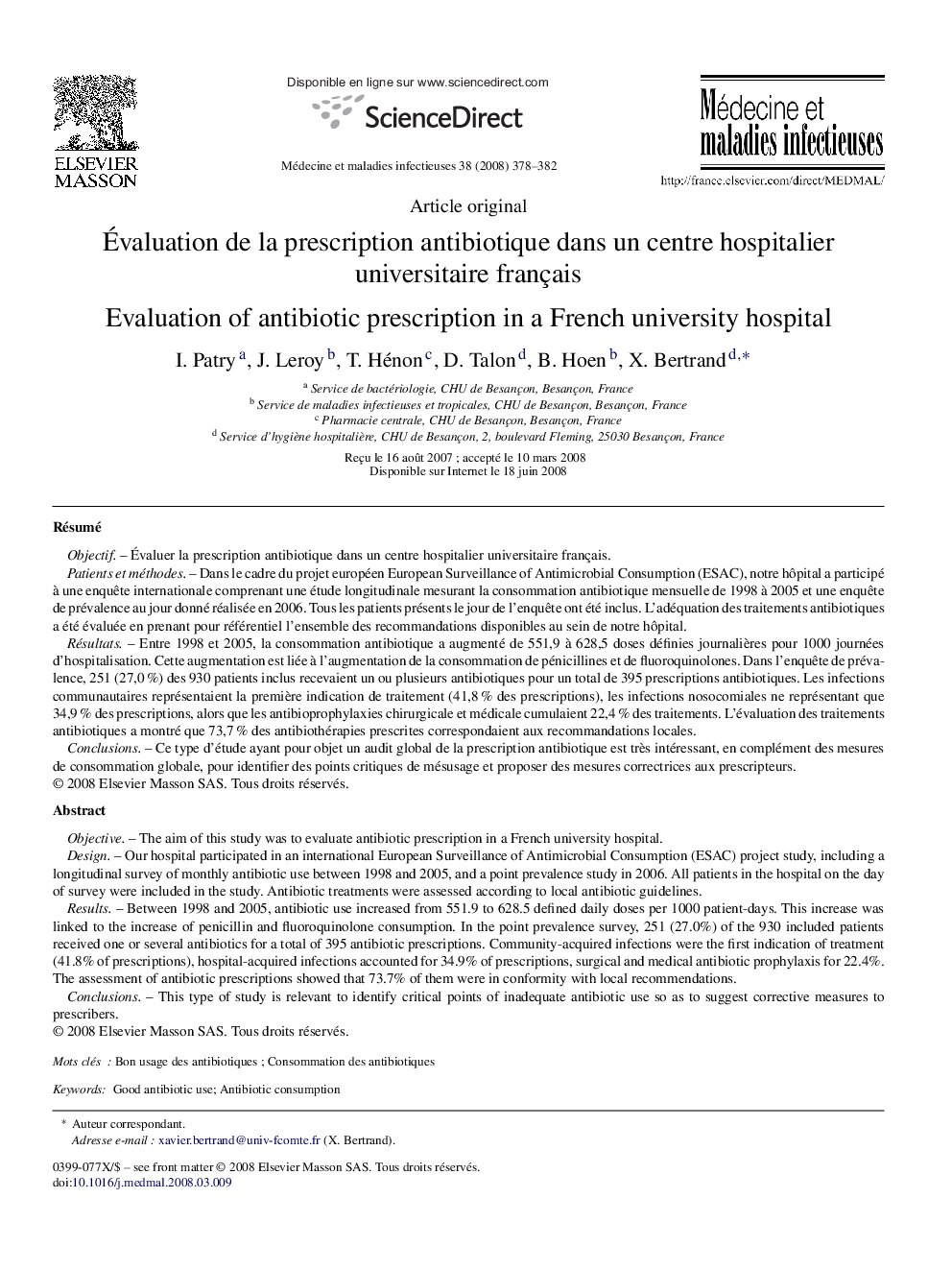| Article ID | Journal | Published Year | Pages | File Type |
|---|---|---|---|---|
| 3414261 | Médecine et Maladies Infectieuses | 2008 | 5 Pages |
RésuméObjectifÉvaluer la prescription antibiotique dans un centre hospitalier universitaire français.Patients et méthodesDans le cadre du projet européen European Surveillance of Antimicrobial Consumption (ESAC), notre hôpital a participé à une enquête internationale comprenant une étude longitudinale mesurant la consommation antibiotique mensuelle de 1998 à 2005 et une enquête de prévalence au jour donné réalisée en 2006. Tous les patients présents le jour de l’enquête ont été inclus. L’adéquation des traitements antibiotiques a été évaluée en prenant pour référentiel l’ensemble des recommandations disponibles au sein de notre hôpital.RésultatsEntre 1998 et 2005, la consommation antibiotique a augmenté de 551,9 à 628,5 doses définies journalières pour 1000 journées d’hospitalisation. Cette augmentation est liée à l’augmentation de la consommation de pénicillines et de fluoroquinolones. Dans l’enquête de prévalence, 251 (27,0 %) des 930 patients inclus recevaient un ou plusieurs antibiotiques pour un total de 395 prescriptions antibiotiques. Les infections communautaires représentaient la première indication de traitement (41,8 % des prescriptions), les infections nosocomiales ne représentant que 34,9 % des prescriptions, alors que les antibioprophylaxies chirurgicale et médicale cumulaient 22,4 % des traitements. L’évaluation des traitements antibiotiques a montré que 73,7 % des antibiothérapies prescrites correspondaient aux recommandations locales.ConclusionsCe type d’étude ayant pour objet un audit global de la prescription antibiotique est très intéressant, en complément des mesures de consommation globale, pour identifier des points critiques de mésusage et proposer des mesures correctrices aux prescripteurs.
ObjectiveThe aim of this study was to evaluate antibiotic prescription in a French university hospital.DesignOur hospital participated in an international European Surveillance of Antimicrobial Consumption (ESAC) project study, including a longitudinal survey of monthly antibiotic use between 1998 and 2005, and a point prevalence study in 2006. All patients in the hospital on the day of survey were included in the study. Antibiotic treatments were assessed according to local antibiotic guidelines.ResultsBetween 1998 and 2005, antibiotic use increased from 551.9 to 628.5 defined daily doses per 1000 patient-days. This increase was linked to the increase of penicillin and fluoroquinolone consumption. In the point prevalence survey, 251 (27.0%) of the 930 included patients received one or several antibiotics for a total of 395 antibiotic prescriptions. Community-acquired infections were the first indication of treatment (41.8% of prescriptions), hospital-acquired infections accounted for 34.9% of prescriptions, surgical and medical antibiotic prophylaxis for 22.4%. The assessment of antibiotic prescriptions showed that 73.7% of them were in conformity with local recommendations.ConclusionsThis type of study is relevant to identify critical points of inadequate antibiotic use so as to suggest corrective measures to prescribers.
